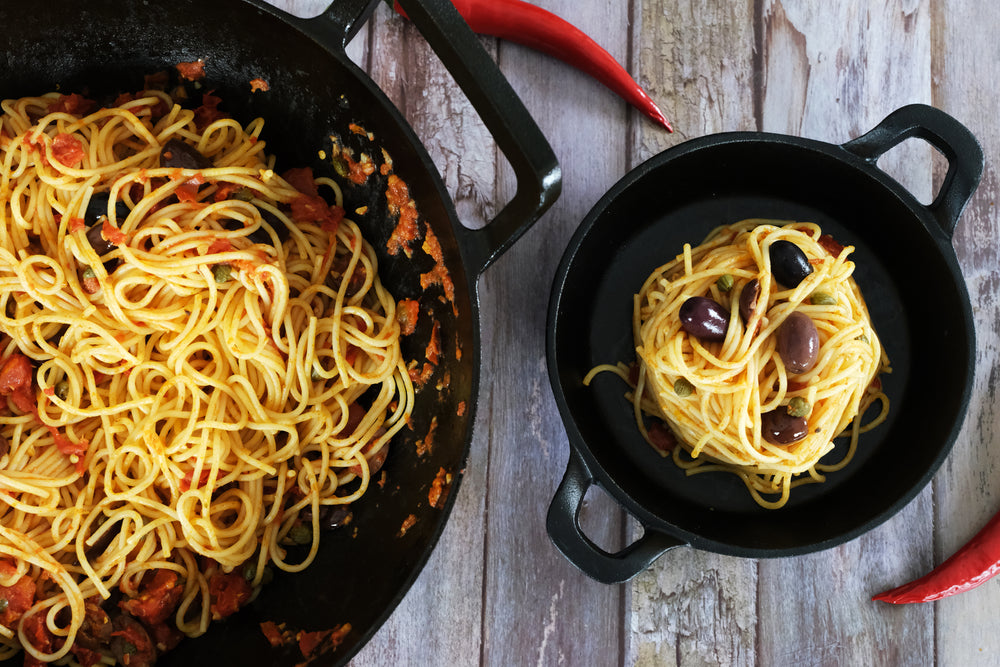Bolognese verstehen: Die reiche Geschichte und wahre Definition von Italiens berühmter Fleischsauce

Bolognese, wie in „Pasta Bolognese“, bezieht sich auf eine reichhaltige, herzhafte Fleischsauce, die aus Bologna stammt, einer Stadt in der Region Emilia-Romagna in Italien. Hier ist eine ausführliche Erklärung ihrer Definition und Herkunft:
Definition
Bolognese-Sauce (Italienisch: ragù alla bolognese) ist eine traditionelle italienische Fleischsauce, die typischerweise mit Pasta serviert wird. Die Hauptmerkmale einer klassischen Bolognese-Sauce sind:
- Zutaten: Hackfleisch (meist eine Mischung aus Rind- und Schweinefleisch), Soffritto (eine Mischung aus fein gehackten Zwiebeln, Karotten und Sellerie), Tomaten oder Tomatenmark, Milch oder Sahne, Wein (weiß oder rot) und manchmal Pancetta (italienischer Speck).
- Zubereitung: Die Sauce wird über mehrere Stunden langsam gekocht, damit sich die Aromen verbinden und das Fleisch zart wird. Sie wird oft so lange geschmort, bis sie eine dicke, herzhafte Konsistenz erreicht.
- Servieren: Traditionell wird Bolognese-Sauce mit Tagliatelle (eine Art bandförmige Pasta) serviert, nicht mit Spaghetti. Sie wird auch in Lasagne alla Bolognese verwendet, geschichtet mit Béchamelsauce und Pastablättern.
Herkunft
Die Ursprünge der Bolognese-Sauce lassen sich auf Bologna, Italien, zurückverfolgen. Hier einige wichtige Punkte zu ihrer Geschichte und Entwicklung:
- Historische Rezepte: Das früheste dokumentierte Rezept für eine Fleischsauce, die der modernen Bolognese-Sauce ähnelt, stammt aus dem 18. Jahrhundert. Das klassische Rezept, wie wir es heute kennen, wurde jedoch formal von Pellegrino Artusi, einem italienischen Geschäftsmann und Schriftsteller, in seinem Kochbuch von 1891 „La Scienza in Cucina e l'Arte di Mangiar Bene“ (Die Wissenschaft in der Küche und die Kunst des guten Essens) festgehalten.
- Traditionelle Methoden: Die traditionelle Zubereitung von Bolognese beinhaltet einen langsamen Kochprozess, der die Aromen vollständig entwickeln lässt. Diese Methode betont die Verwendung lokaler Zutaten und die kulinarischen Techniken der Region Emilia-Romagna.
- Moderne Variationen: Im Laufe der Zeit hat sich die Bolognese-Sauce weiterentwickelt und an verschiedene Geschmäcker und Vorlieben angepasst. Während die Kernzutaten gleich bleiben, gibt es Variationen im Rezept, die oft von regionalen und persönlichen Vorlieben beeinflusst sind.
Weltweiter Einfluss
Bolognese-Sauce ist ein Grundnahrungsmittel der italienischen Küche geworden und hat internationale Beliebtheit erlangt. Außerhalb Italiens wird sie oft als „Spaghetti Bolognese“ bezeichnet, obwohl sie in Italien traditionell eher mit Tagliatelle serviert wird. Die weltweite Version enthält oft zusätzliche Zutaten wie Knoblauch und Kräuter, die im traditionellen italienischen Rezept normalerweise nicht verwendet werden.
Zusammenfassend ist Bolognese-Sauce eine reichhaltige, langsam gekochte Fleischsauce aus Bologna, Italien, die traditionell mit Tagliatelle serviert wird. Ihre reiche Geschichte und traditionelle Zubereitungsmethoden haben sie zu einem beliebten Gericht sowohl in Italien als auch weltweit gemacht.
Ist es eine Sauce oder ein Ragù?
Bolognese-Sauce wird oft als ragù bezeichnet, ein italienischer Begriff für eine fleischbasierte Sauce. Genauer gesagt ist sie als ragù alla Bolognese bekannt.
Begriffsklärung
-
Sauce:
- Allgemeine Definition: Eine Sauce ist eine flüssige oder halbflüssige Substanz, die mit Speisen serviert wird, um Feuchtigkeit und Geschmack hinzuzufügen.
- Bolognese-Kontext: Im weiteren Sinne kann Bolognese als Sauce betrachtet werden, da sie verwendet wird, um Pasta zu verfeinern und dem Gericht Feuchtigkeit, Geschmack und Reichhaltigkeit zu verleihen.
-
Ragù:
- Spezifische Definition: In der italienischen Küche ist ein Ragù eine fleischbasierte Sauce, die typischerweise langsam gekocht und mit Pasta serviert wird. Es gibt viele Variationen von Ragù in ganz Italien, wobei ragù alla Bolognese eine der bekanntesten ist.
- Bolognese-Kontext: Bolognese ist eine Art Ragù. Es beinhaltet das langsame Kochen von Hackfleisch mit Soffritto (einer Mischung aus fein gehackten Zwiebeln, Karotten und Sellerie), Tomaten oder Tomatenmark, Wein und manchmal Milch oder Sahne. Der langsame Kochprozess und die Verwendung von Fleisch als Hauptzutat klassifizieren es als Ragù.
Fazit
Obwohl Bolognese häufig als Sauce bezeichnet wird, ist sie genauer als ragù zu beschreiben. In Italien bezieht sich der Begriff ragù alla Bolognese speziell auf diese fleischbasierte Sauce aus Bologna. Somit ist sie zwar im allgemeinen kulinarischen Sinne eine Sauce, ihre spezifische Klassifikation ist jedoch ein ragù.
















Einen Kommentar hinterlassen